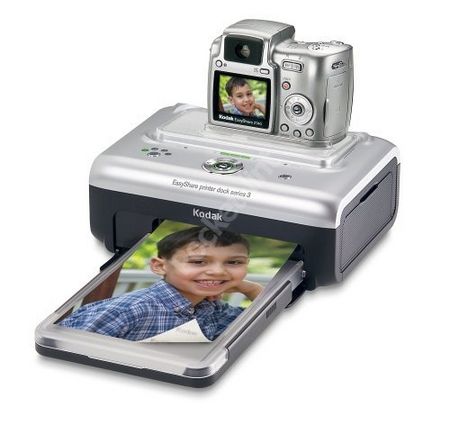Kodak may not be the first company to pair a digital camera with a printer, but it certainly is trying to push home the idea that we should print out our photos, put them in a box and keep them in the loft for a rainy day rather than trust non-paper formats for all time - after all they haven’t had two centuries of testing.
Our quick take
Print quality can only really be described as ‘fair', with prints created using thermal dye transfer technology that uses heat to transfer cyan, magenta, yellow and a sealing ‘varnish' layer onto specialist 6x4-inch photo paper at 300ppi.
Prints take about 90-seconds to print, slipping through the printer once for each of the colours and once more for the application of the sealing layer. However, some striping of prints is visible as lines across dark or shadow areas and in some highlights. Also, the in-printer processing tries to ensure a bright, vibrant print and succeeds in doing just that, but at the price of boosting noise problems in any images you print.
Overall this is a simple to use complete digital image solution but with question marks over the camera's build quality, overall good image quality redresses the balance somewhat but print quality is variable at best.

Kodak EasyShare Z740 Digital Camera and EasyShare Printer Dock 3 - 3.5 / 5
| FOR | AGAINST |
|---|---|
|
|
Kodak’s range of EasyShare cameras grows apace and this kit, complete with a neat printer dock allows you to take photos and print them directly from the camera, which sits on top of the printer.
The Z740 camera boasts a Kodak F2.8 Retinar, aspheric 10x optical zoom all-glass lens, providing a 38-380mm, focal range (35mm equivalent). A 1.8-inch colour ‘indoor/outdoor’ screen, which is designed to be usable even in brighter conditions, works well enough but bright, direct sunlight still presents it with a challenge.
However, backing up the colour screen is an electronic viewfinder (EVF) that can double up on all the displayed options in the LCD. The EVF has no diopter control and is a tad blurry in use but it does save power from the camera’s two AA batteries (including NiMH rechargeable cells) or a single (supplied) CRV3 lithium battery.
The camera is surprisingly small given its long zoom capability but provides full manual control as well as automatic shooting options. You get 14 scene modes that provide settings for almost any situation, from night portraits to self-portraits, from landscape and beach settings to a good macro mode.
Most of the shooting options are within set, contextual menus. The options are accessed depending on the mode the camera is in, manual controls in the manual shooting setting and auto scene modes in auto shooting, and so on. Once you get the hand of their location the menus are easy to use thanks to great help screens that pop up (and can be switched off if they get too annoying) each time you change a mode or setting.
Build quality is ‘plasticky’. The SD removable storage bay has plastic cover that feels rather fragile, the pop-up flash is activated using a very clunky switch on the top plate and the on/off switch is very sticky to use.
However, image quality is generally good but with noticeable blue pixel fringing and edge-to-edge sharpness, it’s rather poor as well. This will lose you any detail at the extremes of the image.
The EasyShare Printer Dock 3 part of the equation is also simple to use and allows you to sit the camera onto its top using the custom camera insert (supplied with the camera), a neat accessory that allows almost any Kodak EasyShare camera to be connected to the printer dock - each camera is supplied with the right dock adapter. In this way you can print directly from the camera or you can connect it to your computer via its USB connection.
To recap
The printer dock works well providing good photo prints and both are easy to use. However, the camera element lacks finesse in both handling and operation while some prints have visible lines.
